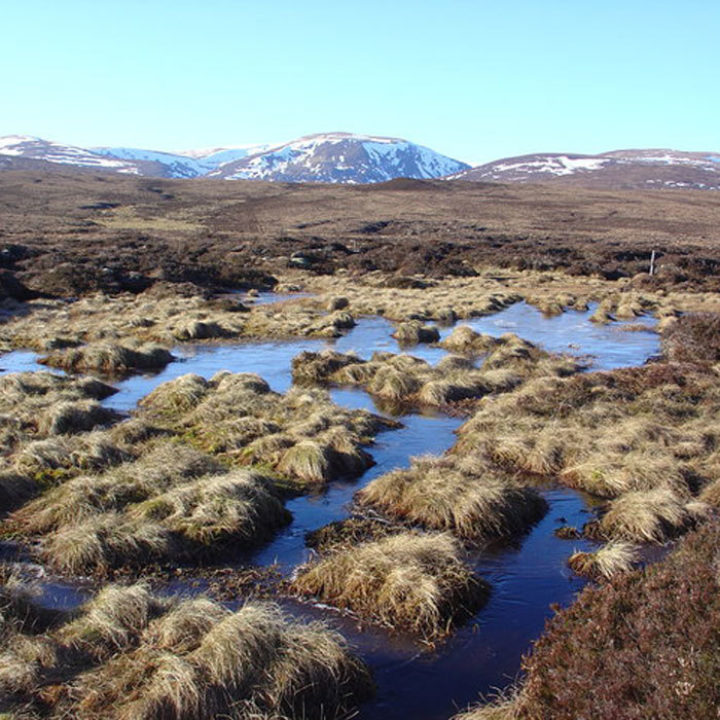Net zero: Five essential takeaways
The UK is set on a path towards net-zero emissions - so how do we get there?
By Richard Black
Share
Last updated:
Although the government was a little more modest on Tuesday than it needed to be, the commitment that Energy and Clean Growth Minister Claire Perry made is quite a strong one.

The Committee on Climate Change (CCC), the government’s statutory adviser, will begin deliberations this year on how and when the UK should bring its net greenhouse gas emissions down to zero – in other words, how and when it stops contributing to climate change.
We know that the date it recommends will be around mid-century – perhaps 2050, to which France and New Zealand have already committed, perhaps earlier as with the pledges of Norway, Iceland and Sweden. We know that for two reasons:
- the Committee indicated as much in January, in its response to the Clean Growth Strategy
- it is going to base its new advice on the October Special Report from the Intergovernmental Panel on Climate Change. A leaked draft indicates that it is likely to conclude that global emissions need to fall to net zero by mid-century; and the UK, as a developed nation, would be expected to be ahead of the global average.
So while 'when' is important, the really interesting question will be the ‘how’. While clearly the big picture is to reduce emissions to absolute zero in all sectors of the economy where that's possible and then mop up the rest with various 'negative emissions' approaches, there promises to be lots of interesting detail and sectoral prescriptions.
The UK government is committed inexorably, now, to adopting a net zero emissions future with a target date on the order of a single human generation. And while much remains to be debated about the path to that destination, here are five things we do know.
‘Failure is not an option’
Echoing a whole raft of crew-cut sergeant-majors in American movies, Sweden’s Deputy Prime Minister Isabella Lövin pointed out this week that it is not an option to conclude that net zero is impossible. The eventual extent of global climate change is related to cumulative global carbon emissions. And therefore, she wrote in The Guardian:
It is not acceptable for any government or statutory adviser to say that net zero cannot be done. It has to be done – because as long as we continue emitting carbon dioxide, temperatures will continue to rise
… a view that the CCC’s former Head of Science confirmed as correct.
In reality, we do not need to know now how every last percent will be accounted for; that would be absurdly prescriptive. But this isn’t a problem. We do know how to do most of it; indeed, the CCC already has policy scenarios that cut emissions by 90% in 2050 (from the 1990 baseline).
Negative emissions are not a magic bullet
Generally speaking, it’s more sensible to reduce greenhouse gas output than to do ‘negative emissions’ – pulling carbon dioxide out of the air. The scale of options is far greater, so is the certainty that they work, and so is the precision of measurement. So, negative emissions are not a ‘get-out-of-jail-free’ card.
Sweden – the only country so far to put its net zero target (date 2045) in law – plans to reduce emissions absolutely by at least 85% (from 1990 levels). That means mopping up at most 15% of its emissions. It envisages three basic approaches, with the precise balance being decided later:
- enhancing natural ‘sinks’ in Sweden – mainly forests
- investing in bioenergy with carbon capture and storage (BECCS) – where crops are grown, burned in power stations, and the emissions sequestered away underground
- funding the enhancement of natural sinks in other countries (probably in the tropics).
Indeed, those are the three basic approaches that any nation would consider.
The point is that there are limits to all of these. The European Science Academies Advisory Panel recently looked at the potential of negative emissions (NETs) to contribute to meeting the Paris Agreement targets, and concluded that it is limited:
Relying on NETs to compensate for failures to adequately mitigate emissions may have serious implications for future generations
Logically, then, a net zero target means reaching absolute zero in all sectors where that’s possible. We know how to do it in the power sector, land transport, shipping, heating and some industries. We don’t know how to in agriculture, aviation, and a few other industries. But the implication is that all sectors where absolute zero options exist will have to move there, on varying timescales (probably the power sector first).
It is also worth noting that not all NETs are the same. As the Swedish example shows, there are natural climate solutions and technological ones. In general, the natural ones can bring big benefits in other areas – wildlife, soil protection, rural livelihoods, etc – if they’re done well. They’ll almost certainly be far cheaper too.
Stop doing the stupid stuff, start doing the sensible stuff
Conceptually, there are two types of ‘stupid stuff’:
- things that actively raise emissions
- things that look ok against short-term targets but which lock in problems for the future.
On a global basis, the prime example of Type One stupid stuff is losing natural carbon sinks – logging old-growth forest, hacking out seagrass beds, and so on. The prime example of Type Two is populating fast-growing cities in the tropics with buildings that require lots of powered air-conditioning, rather than using more passive systems.

Clearly, given the big caveats on negative emissions, stopping doing these things as soon as possible is a no-brainer.
There are UK equivalents.
Given that peat is the UK’s biggest ‘natural carbon store’, why is the government allowing it to be used in horticulture for another 12 years? Stopping peatland loss and restoring degraded peat beds as close as possible to their former glory would be an eminently sensible thing from a ‘net zero’ point of view, as well as providing countryside and nature benefits.
On the ‘lock-in’ side: why are we building new homes with oil-fired heating systems? In fact, why aren't all homes, indeed all buildings, being built to ‘zero-carbon’ standards? Once you have a net-zero target in place, the paradoxical nature of such policies becomes obvious.
Meanwhile… keep doing the sensible stuff – the stuff that we know works. The two most conspicuous success stories of the last 20 years have been cutting energy waste - which has brought down demand, and thus bills - and the power sector transition away from coal towards renewables and gas. Re-booting energy efficiency policy, which is currently stuck, is clearly a no-brainer. Continuing the power sector shift would also be sensible, especially with renewables costs tumbling - simply shifting from coal can't bring down emissions much further as coal is nearly gone, hence measures to transition from gas to low-carbon generation are the logical next step.
At some stage, ministers will have to take big decisions
Some sectors can progress serenely towards zero emissions using largely market mechanisms – once electric cars and charging stations reach critical mass, one would anticipate this happening, and indeed such seems to be the belief within government. But on others, the government will at some point have to make a - cue drum-roll - Big Decision.
The exemplar is domestic heating. We could in principle switch our homes to zero-carbon heating using solar thermal, heat-pumps, district heating, biomass or zero-carbon gas. But in towns and cities, it seems unlikely that a hotch-potch of solutions, with one terraced house doing one thing and the neighbours another, would be efficient. City-wide or at least district-wide systems are, I would suggest, far more likely.
And if for example a city decides to retain existing gas infrastructure and move to biogas or hydrogen as the fuel, then someone, whether minister, mayor or council, is going to have to take that decision and stick to it.
Trials are taking place around the UK now. Public consultations would be wise too. Starting before too long.
We don’t have all the answers
As I mentioned above, options for full decarbonisation exist for most sectors. But not for others.

The main standouts include aviation and agriculture. But even in the power sector there are technologies that would be nice to have but which we do not have, an obvious one being long-term storage (in addition to pumped hydro) capable of lasting through a winter.
Innovation is happening anyway, of course. In power, business models of storage and demand response providers are evolving rapidly where the regulatory regime allows. Companies are developing smart ways to route power around networks actively, avoiding bottlenecks. Blockchain offers exciting opportunities for peer-to-peer trading.
Still there are lots of places where concentrated investment in missing pieces could yield a game-changer. The list identified by Mission Innovation, the international R&D network, isn’t a bad place to start, encompassing carbon capture and storage, sustainable biofuels (probably most useful in aviation), how to convert solar energy into storable fuels, and a few more.
Yet, after a peak earlier in the decade, spending on energy research and development, certainly in OECD countries, has declined. Historically it has ramped up in response to a crisis. The Paris Agreement and the consequent imperative for net zero suggests it’s time to break the pattern – and ramp up R&D spend in response to an opportunity.
In the UK and elsewhere, this year's big climate change story is going to be net zero. The IPCC report due in October - on which all governments will sign off, however gritted their teeth - makes that inevitable.
The IPCC report will basically spell out what countries need to do in order to deliver the commitment they made at the 2015 Paris climate summit to hold global warming 'well below 2ºC', and to attempt to keep it below 1.5ºC.
And bringing emissions to net zero around mid-century is set to be the top-line conclusion. Which is exactly why many governments will be debating the issues I've set out above. The UK has just got there ahead of most.
Share